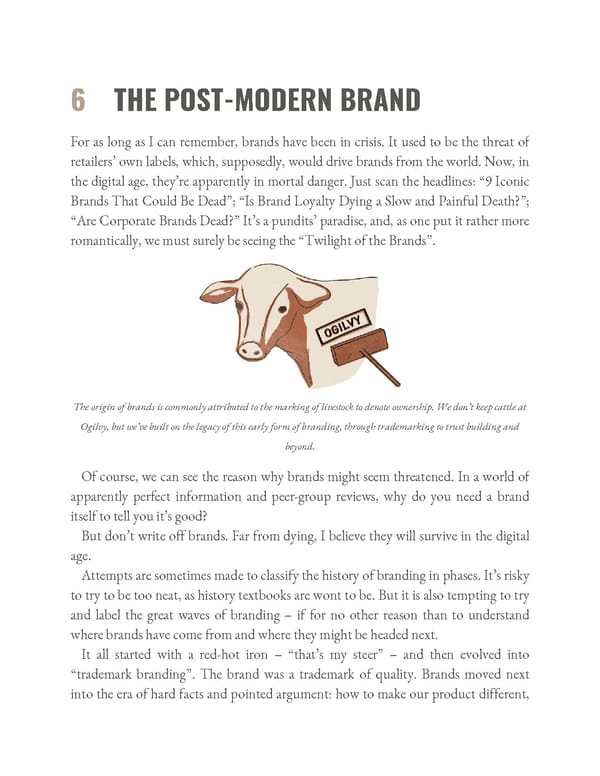6 THE POST-MODERN BRAND For as long as I can remember, brands have been in crisis. It used to be the threat of retailers’ own labels, which, supposedly, would drive brands from the world. Now, in the digital age, they’re apparently in mortal danger. Just scan the headlines: “9 Iconic Brands That Could Be Dead”; “Is Brand Loyalty Dying a Slow and Painful Death?”; “Are Corporate Brands Dead?” It’s a pundits’ paradise, and, as one put it rather more romantically, we must surely be seeing the “Twilight of the Brands”. The origin of brands is commonly attributed to the marking of livestock to denote ownership. We don’t keep cattle at Ogilvy, but we’ve built on the legacy of this early form of branding, through trademarking to trust building and beyond. Of course, we can see the reason why brands might seem threatened. In a world of apparently perfect information and peer-group reviews, why do you need a brand itself to tell you it’s good? But don’t write off brands. Far from dying, I believe they will survive in the digital age. Attempts are sometimes made to classify the history of branding in phases. It’s risky to try to be too neat, as history textbooks are wont to be. But it is also tempting to try and label the great waves of branding – if for no other reason than to understand where brands have come from and where they might be headed next. It all started with a red-hot iron – “that’s my steer” – and then evolved into “trademark branding”. The brand was a trademark of quality. Brands moved next into the era of hard facts and pointed argument: how to make our product different,
 Ogilvy on Advertising in the Digital Age Page 101 Page 103
Ogilvy on Advertising in the Digital Age Page 101 Page 103